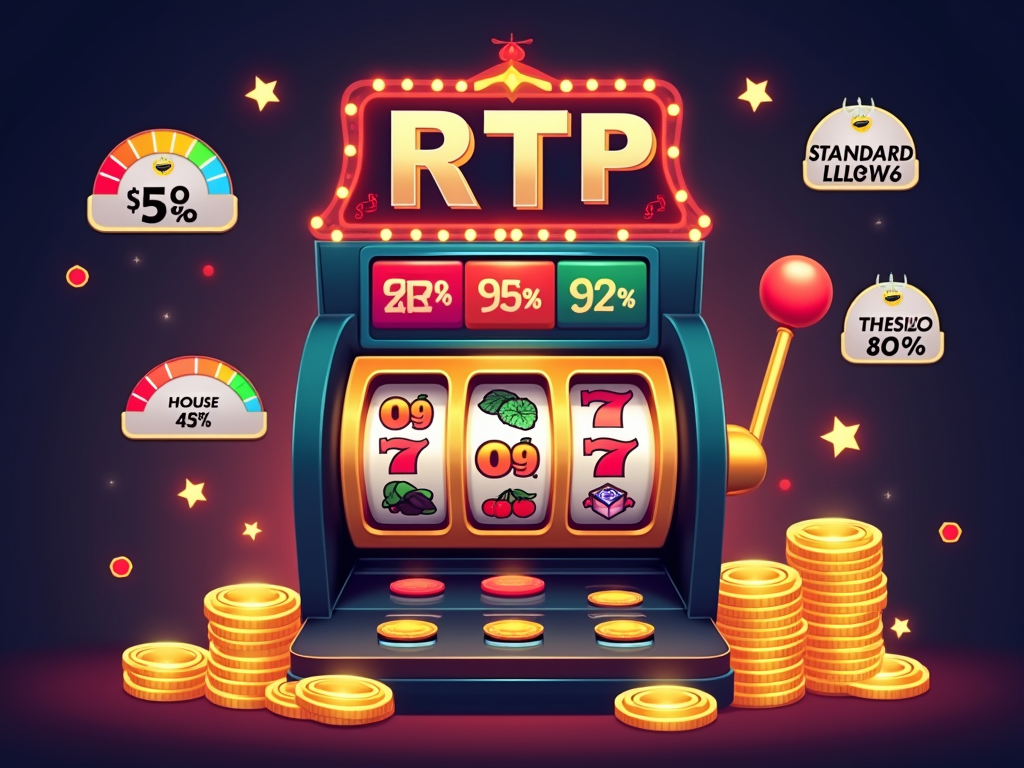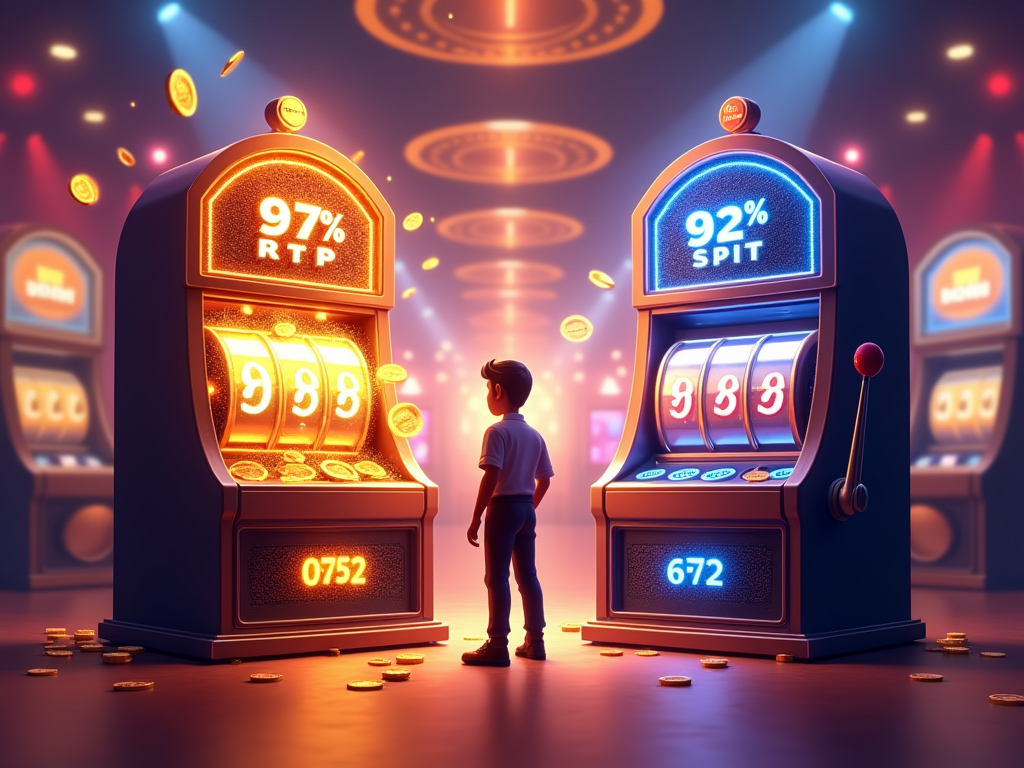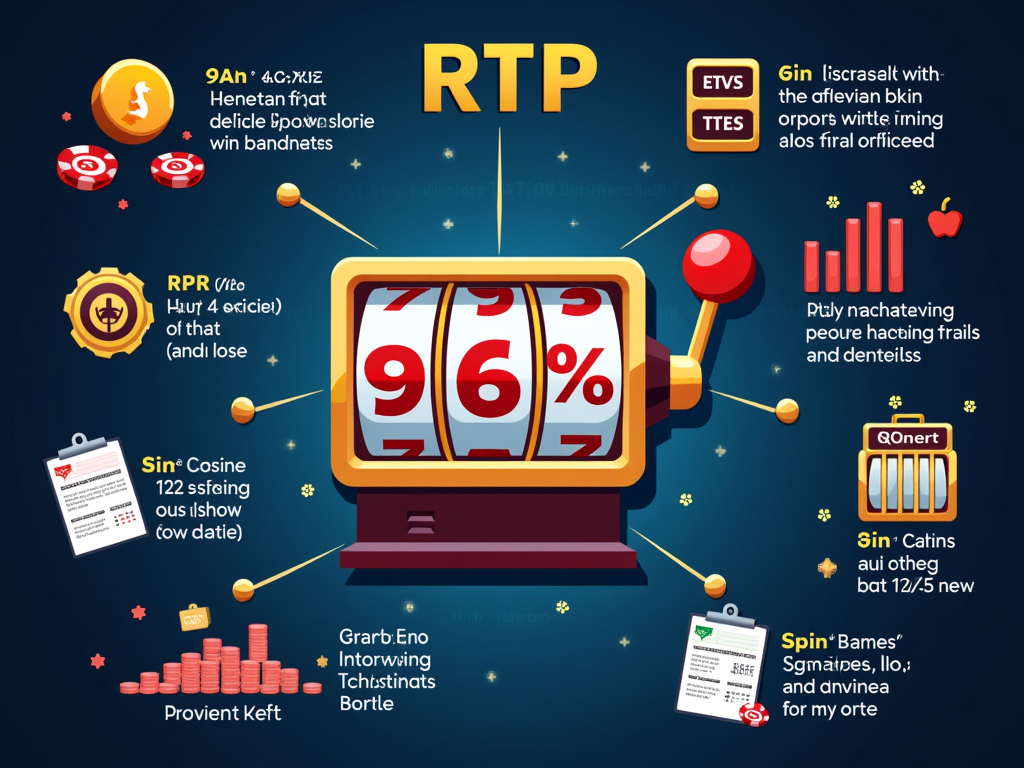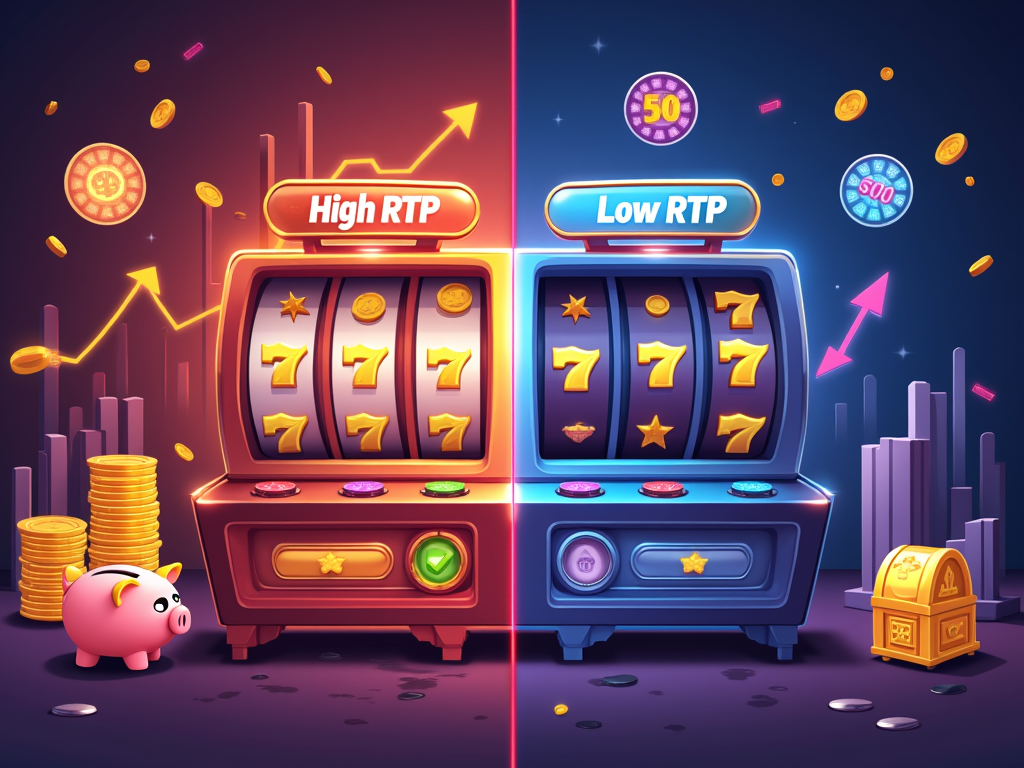Understanding Return to Player (RTP) in Online Slot Games
Return to Player (RTP) indicates the theoretical percentage of money returned to players over millions of spins in online slot games. This critical metric guides players in selecting games and managing bankrolls effectively, directly impacting potential long-term returns.
Key Takeaways
- Most online slots feature RTPs between 95-96%, with higher percentages offering better theoretical value
- Progressive jackpot slots typically have lower RTPs (88-92%) to accommodate large prize pools
- RTP calculations stem from millions of spins and don’t guarantee short-term returns
- Higher RTP slots (97%+) generally provide longer gameplay and frequent smaller wins
- Players benefit from considering both RTP and volatility in slot selection
The Importance of RTP in Game Selection
I consider RTP a fundamental factor in making smart slot game choices. The metric helps determine which games offer the best mathematical advantage for players. While high-RTP slots don’t guarantee wins, they indicate games programmed to pay out more frequently over time.
Lower RTPs in Progressive Jackpots
Progressive jackpot games maintain lower RTPs by design. These games allocate a portion of each bet to build massive prize pools, reducing the frequency of regular payouts. Players drawn to life-changing jackpots should expect fewer wins during standard gameplay.
Benefits of High RTP Slots
Higher RTP slots excel at extending gameplay through regular small and medium wins. Games with 97% or higher RTP rates often provide steadier returns, making them ideal for players focused on entertainment value and longer sessions.
RTP and Volatility: A Balanced Play Experience
The combination of RTP and volatility creates each game’s unique payout personality. Low volatility slots with high RTPs offer consistent but modest wins, while high volatility games deliver rarer but larger payouts. This balance shapes the overall playing experience and potential returns.
What RTP Really Means for Slot Players
RTP stands as one of the most crucial metrics in online slot games and winning potential. I’ll break down exactly what this percentage means and how it affects your gameplay.
Understanding RTP Calculations
RTP reflects the percentage of wagered money that returns to players over an extended period – specifically through millions of spins. The calculation is straightforward: take the total amount returned to players and divide it by the total amount wagered, then multiply by 100 to get your percentage.
For instance, if players collectively wager £1,000,000 on a slot game, and the total payouts amount to £960,000, the RTP would be 96%. This means that for every £100 you put into the game, you can expect about £96 back over the long term. The remaining £4 represents the house edge – the casino’s built-in advantage.
Making Sense of RTP Values
Most online slots feature RTPs between 95% and 96%, though you’ll find some variation above and below these figures. Here’s what different RTP levels mean for your gameplay:
- 97% or higher: Outstanding return rate, offering better long-term value
- 95–96%: Industry standard, providing balanced gameplay
- Below 94%: Lower than average returns, consider other options
- 92% or lower: Significantly higher house edge, proceed with caution
Remember that RTP represents long-term averages, not guaranteed returns on each session. Your personal experience might vary significantly from these percentages during shorter playing periods. That’s why I always suggest thinking of RTP as a guide for game selection rather than a promise of specific returns.

Why Your Slot’s RTP Number Matters
Return to Player (RTP) percentage stands as a crucial metric that directly affects your potential returns when playing online slots and casino games. I can’t stress enough how this single number shapes your gambling experience and bankroll management.
Understanding RTP’s Impact on Your Gameplay
Let’s break this down into real numbers you can use. Picture starting with £100 in your account. On a slot with 97% RTP, your theoretical loss sits at £3, while a 95% RTP slot would lead to a £5 loss. That’s a significant 40% difference in potential losses between these two options.
I’ve found that higher RTP slots can make a substantial difference during longer gaming sessions. Here’s what you should consider about RTP values:
- A 97% RTP slot typically offers better value than a 92% RTP option
- Your bankroll tends to stretch further with higher RTP games
- Over time, the house edge becomes more apparent with lower RTP percentages
- Short-term results can still vary drastically despite RTP differences
It’s important to note that RTP doesn’t predict your short-term success. You might hit a jackpot on a low RTP slot or experience a losing streak on a high RTP game – that’s just the nature of random outcomes. However, across thousands of spins, the mathematical advantage of choosing higher RTP slots becomes clear.
The variance between a 92% and 97% RTP might seem small at first glance, but it represents a substantial difference in your expected returns. Think of it this way: playing with £1000 over time, you’d theoretically lose £80 more on the 92% RTP slot compared to its 97% counterpart. That’s money that could fund additional playing time or, better yet, stay in your pocket.

High vs Low RTP Slots Compared
When playing online slots with different RTP rates, you’ll notice significant variations in potential returns and winning patterns. I’ve found that understanding these differences can help you make smarter gaming choices.
Understanding High RTP Slots
High RTP slots, with rates above 97%, stand out as the most player-friendly options in terms of theoretical returns. These games can give you more playtime for your budget and frequent, smaller wins. Take Ugga Bugga, for instance, which boasts an impressive 99.07% RTP — making it one of the highest-paying online slots available. Other notable high-RTP games include:
- Mega Joker — 99%
- Book of 99 — 99%
These slots typically favor players who prefer extended playtime and consistency rather than high volatility.
Low RTP Slots and Progressive Jackpots
I’ve noticed that progressive jackpot slots often come with lower RTPs, typically falling below 95%. Here’s what you should know about different RTP ranges:
- Average RTP slots (95–97%): These games balance regular payouts with decent winning potential.
- Low RTP slots (below 95%): Usually feature larger potential wins but less frequent payouts.
- Progressive jackpots (88–92%): Games like Mega Moolah maintain lower RTPs to fund their massive prizes.
The trade-off becomes clear — higher RTP slots offer better long-term returns but usually cap out at smaller maximum wins. Progressive jackpots like Mega Moolah sacrifice regular returns for the chance at life-changing payouts.
I’ve found that your choice between high and low RTP slots should depend on your playing style and goals — whether you’re looking for extended gameplay with steady returns or chasing those massive jackpot dreams.
Remember that these RTP percentages represent theoretical returns over millions of spins, so your actual results during any gaming session can vary significantly from these figures.
Understanding RTP vs Volatility
RTP and volatility are two key factors that shape your slot gaming experience. I’ve found that while these concepts work together, they affect your gameplay in distinctly different ways.
How RTP and Volatility Work Together
RTP (Return to Player) tells you the theoretical percentage of money that a slot game returns to players over an extended period. For example, a 96% RTP means that for every $100 wagered, the game should pay back $96 in the long run. However, this doesn’t tell you how often you’ll win or how big those wins might be — that’s where volatility comes in.
Think of volatility as the risk level of the slot. Here’s what you can expect from different volatility levels:
- Low Volatility Slots:
- Frequent small to medium wins
- Steady bankroll maintenance
- Extended playing sessions
- Perfect for casual players
- High Volatility Slots:
- Less frequent wins
- Larger potential payouts
- More significant bankroll swings
- Better suited for patient players
I’ve noticed that many players make the mistake of focusing solely on RTP when choosing a slot game. While a high RTP of 96% or above is desirable, your playing style should match the game’s volatility level. For instance, if you enjoy longer sessions with consistent small wins, a low volatility slot with a slightly lower RTP might suit you better than a high volatility game with a higher RTP.
The sweet spot lies in finding a slot that balances both factors according to your preferences. If you’re working with a smaller bankroll, low volatility slots can help extend your playing time, while high volatility slots might be more appealing if you’re chasing those big wins and don’t mind taking bigger risks.
Finding and Verifying RTP Information
RTP information is crucial for making smart choices when playing online slots and maximizing potential wins. I’ve found that trusted online casinos make this data readily available through several channels.
Where to Look for RTP Data
The quickest way to find RTP percentages is directly within the slot game itself. Here’s where you’ll typically spot this vital information:
- Check the paytable by clicking the menu or settings icon
- Look for the information (‘i’) button within the game interface
- Browse through the complete game rules section
- Review the help files accessible from the main game screen
- Visit the game developer’s official website
- Read through the casino’s terms and conditions page
I always verify RTP figures through multiple sources since accuracy matters. Licensed casinos regulated by the UK Gambling Commission (UKGC) or Malta Gaming Authority (MGA) must display accurate RTP information as part of their compliance requirements.
For extra confidence in the numbers, I cross-reference data from reputable slot review websites. These platforms regularly update their information and often maintain direct relationships with game developers to ensure accuracy. They’ll display the theoretical RTP alongside real-world performance data, giving you a complete picture of what to expect.
It’s essential to note that some slots might have varying RTP settings. Licensed operators must be transparent about any RTP ranges or adjustments, so I make it a habit to check the specific casino’s documentation rather than relying solely on general game information.
Common RTP Myths Debunked
I need to address a critical misconception about RTP in online slot games and payout percentages. Many players mistakenly believe RTP guarantees specific returns during their gaming sessions. That’s not how it works.
Understanding True RTP Behavior
RTP percentages are calculated across millions of spins, not individual sessions. A 96% RTP doesn’t mean you’ll get $96 back from every $100 wagered. Each spin operates independently through a Random Number Generator (RNG), making it impossible to predict short-term outcomes.
Think of it like flipping a coin—getting heads five times in a row doesn’t make tails more likely on the next flip. The same principle applies to slots: previous results don’t influence future spins.
Verification and Testing Standards
Here’s what makes online slots trustworthy and fair:
- Independent testing agencies like eCOGRA and iTech Labs regularly audit slot games
- RNG systems undergo strict certification processes
- Game mathematics are verified to ensure advertised RTP figures are accurate
- Testing includes millions of simulated spins to confirm payout rates
- Regular compliance checks maintain ongoing fairness standards
Short-term variance means your actual returns might swing higher or lower than the stated RTP. I’ve seen players hit significant wins well above the theoretical return rate, while others experience extended periods below it. This variation is normal and expected in any probability-based game.
The certification process by testing agencies provides crucial oversight for online slots. These organizations use sophisticated testing methods to verify that each game’s RNG and mathematical models align with the published RTP figures. Their ongoing monitoring helps maintain the integrity of online slot games while protecting player interests.

Sources:
UK Gambling Commission, Malta Gaming Authority, Casino.org, AskGamblers, iTech Labs, eCOGRA





